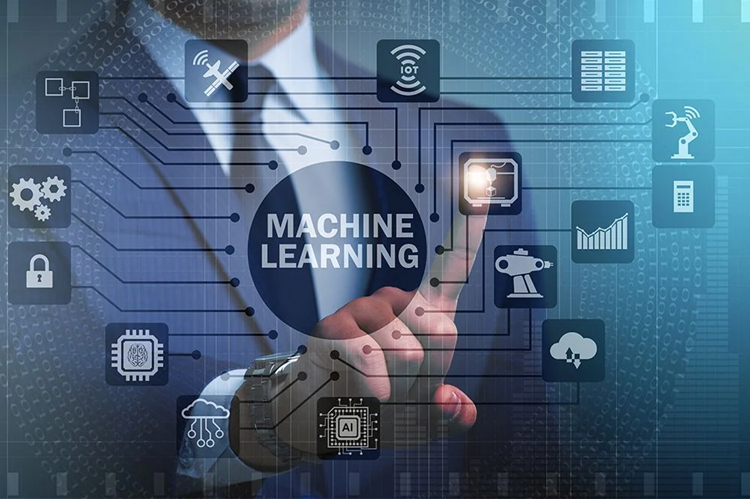Machine learning (ML) technologies can drive decision-making in virtually all industries, from healthcare to human resources to finance and in myriad use cases, like computer vision, large language models (LLMs), speech recognition, self-driving cars and more.
However, the growing influence of ML isn’t without complications. The validation and training datasets that undergird ML technology are often aggregated by human beings, and humans are susceptible to bias and prone to error. Even in cases where an ML model isn’t itself biased or faulty, deploying it in the wrong context can produce errors with unintended harmful consequences.
That’s why diversifying enterprise AI and ML usage can prove invaluable to maintaining a competitive edge. Each type and sub-type of ML algorithm has unique benefits and capabilities that teams can leverage for different tasks. Here, we’ll discuss the five major types and their applications.
What is machine learning?
ML is a computer science, data science and artificial intelligence (AI) subset that enables systems to learn and improve from data without additional programming interventions.
Instead of using explicit instructions for performance optimization, ML models rely on algorithms and statistical models that deploy tasks based on data patterns and inferences. In other words, ML leverages input data to predict outputs, continuously updating outputs as new data becomes available.
On retail websites, for instance, machine learning algorithms influence consumer buying decisions by making recommendations based on purchase history. Many retailers’ e-commerce platforms—including those of IBM, Amazon, Google, Meta and Netflix—rely on artificial neural networks (ANNs) to deliver personalized recommendations. And retailers frequently leverage data from chatbots and virtual assistants, in concert with ML and natural language processing (NLP) technology, to automate users’ shopping experiences.
Machine learning types
Machine learning algorithms fall into five broad categories: supervised learning, unsupervised learning, semi-supervised learning, self-supervised and reinforcement learning.
1. Supervised machine learning
Supervised machine learning is a type of machine learning where the model is trained on a labeled dataset (i.e., the target or outcome variable is known). For instance, if data scientists were building a model for tornado forecasting, the input variables might include date, location, temperature, wind flow patterns and more, and the output would be the actual tornado activity recorded for those days.
Supervised learning is commonly used for risk assessment, image recognition, predictive analytics and fraud detection, and comprises several types of algorithms.
- Regression algorithms—predict output values by identifying linear relationships between real or continuous values (e.g., temperature, salary). Regression algorithms include linear regression, random forest and gradient boosting, as well as other subtypes.
- Classification algorithms—predict categorical output variables (e.g., “junk” or “not junk”) by labeling pieces of input data. Classification algorithms include logistic regression, k-nearest neighbors and support vector machines (SVMs), among others.
- Naïve Bayes classifiers—enable classification tasks for large datasets. They’re also part of a family of generative learning algorithms that model the input distribution of a given class or/category. Naïve Bayes algorithms include decision trees, which can actually accommodate both regression and classification algorithms.
- Neural networks—simulate the way the human brain works, with a huge number of linked processing nodes that can facilitate processes like natural language translation, image recognition, speech recognition and image creation.
- Random forest algorithms—predict a value or category by combining the results from a number of decision trees.
2. Unsupervised machine learning
Unsupervised learning algorithms—like Apriori, Gaussian Mixture Models (GMMs) and principal component analysis (PCA)—draw inferences from unlabeled datasets, facilitating exploratory data analysis and enabling pattern recognition and predictive modeling.
The most common unsupervised learning method is cluster analysis, which uses clustering algorithms to categorize data points according to value similarity (as in customer segmentation or anomaly detection). Association algorithms allow data scientists to identify associations between data objects inside large databases, facilitating data visualization and dimensionality reduction.
- K-means clustering—assigns data points into K groups, where the data points closest to a given centroid are clustered under the same category and K represents clusters based on their size and level of granularity. K-means clustering is commonly used for market segmentation, document clustering, image segmentation and image compression.
- Hierarchical clustering—describes a set of clustering techniques, including agglomerative clustering—where data points are initially isolated into groups and then merged iteratively based on similarity until one cluster remains—and divisive clustering—where a single data cluster is divided based on the differences between data points.
- Probabilistic clustering—helps solve density estimation or “soft” clustering problems by grouping data points based on the likelihood that they belong to a particular distribution.
Unsupervised ML models are often behind the “customers who bought this also bought…” types of recommendation systems.
3. Self-supervised machine learning
Self-supervised learning (SSL) enables models to train themselves on unlabeled data, instead of requiring massive annotated and/or labeled datasets. SSL algorithms, also called predictive or pretext learning algorithms, learn one part of the input from another part, automatically generating labels and transforming unsupervised problems into supervised ones. These algorithms are especially useful for jobs like computer vision and NLP, where the volume of labeled training data needed to train models can be exceptionally large (sometimes prohibitively so).
4. Reinforcement learning
Reinforcement learning, also called reinforcement learning from human feedback (RLHF), is a type of dynamic programming that trains algorithms using a system of reward and punishment. To deploy reinforcement learning, an agent takes actions in a specific environment to reach a predetermined goal. The agent is rewarded or penalized for its actions based on an established metric (typically points), encouraging the agent to continue good practices and discard bad ones. With repetition, the agent learns the best strategies.
Reinforcement learning algorithms are common in video game development and are frequently used to teach robots how to replicate human tasks.
5. Semi-supervised learning
The fifth type of machine learning technique offers a combination between supervised and unsupervised learning.
Semi-supervised learning algorithms are trained on a small labeled dataset and a large unlabeled dataset, with the labeled data guiding the learning process for the larger body of unlabeled data. A semi-supervised learning model might use unsupervised learning to identify data clusters and then use supervised learning to label the clusters.
Generative adversarial networks (GANs)—deep learning tool that generates unlabeled data by training two neural networks—are an example of semi-supervised machine learning.
Regardless of type, ML models can glean data insights from enterprise data, but their vulnerability to human/data bias make responsible AI practices an organizational imperative.
Manage a range of machine learning models with watstonx.ai
Nearly everyone, from developers to users to regulators, engages with applications of machine learning at some point, whether they interact directly with AI technology or not. And the adoption of ML technology is only accelerating. The global machine learning market was valued at USD 19 billion in 2022 and is expected to reach USD 188 billion by 2030 (a CAGR of more than 37 percent).
The scale of ML adoption and its growing business impact make understanding AI and ML technologies an ongoing—and vitally important—commitment, requiring vigilant monitoring and timely adjustments as technologies evolve. With IBM® watsonx.ai AI studio, developers can manage ML algorithms and processes with ease.
IBM watsonx.ai—part of the IBM watsonx AI and data platform—combines new generative AI capabilities and a next-generation enterprise studio to help AI builders train, validate, tune and deploy AI models with a fraction of the data, in a fraction of the time. Watsonx.ai offers teams advanced data generation and classification features that help businesses leverage data insights for optimal real-world AI performance.
In the age of data proliferation, AI and machine learning are as integral to day-to-day business operations as they are to tech innovation and business competition. But as new pillars of a modern society, they also represent an opportunity to diversify enterprise IT infrastructures and create technologies that work for the benefit of businesses and the people who depend on them.
Source: ibm.com

















